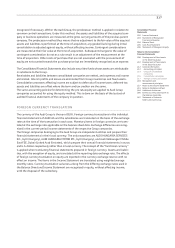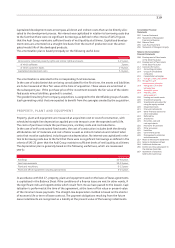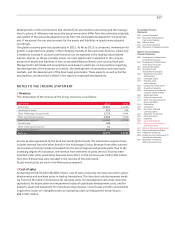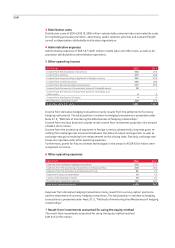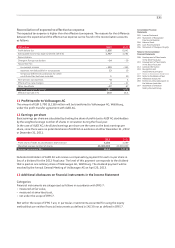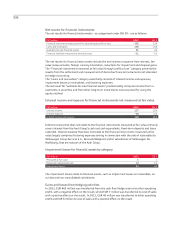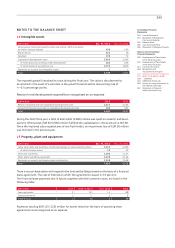Audi 2012 Annual Report Download - page 223
Download and view the complete annual report
Please find page 223 of the 2012 Audi annual report below. You can navigate through the pages in the report by either clicking on the pages listed below, or by using the keyword search tool below to find specific information within the annual report.
226
GOVERNMENT GRANTS
Government grants related to assets are deducted from the cost of purchase or cost of sales and
thus recognized in profit or loss as a reduced depreciation charge over the life of the depreciable
asset. Government grants paid to compensate the Group for expenses are recognized in profit or
loss during the period in which the corresponding expenses were incurred.
MANAGEMENT’S ESTIMATES AND ASSESSMENTS
To some degree, the preparation of the Consolidated Financial Statements entails assumptions
and estimates with regard to the level and disclosure of the recognized assets and liabilities,
income and expenditure, and disclosures with regard to contingent obligations and liabilities for
the reporting period. The assumptions and estimates relate principally to the following contents:
Impairment testing of non-financial assets (particularly goodwill, brand names and capitalized
development costs) and of investments accounted for using the equity method or at the cost
of purchase requires that assumptions be made with regard to future cash flows during the
planning period and, where applicable, with regard to the discounting rate to be applied. Any
impairment of the Group’s leased assets is also dependent in particular on the residual value of
the leased vehicles after the expiry of the lease period, as this represents an essential portion of
the expected incoming payment flows. Further information on impairment testing and on the
measurement parameters applied can be found in the disclosures on the recognition and
measurement principles.
Carrying out impairment testing on financial assets requires estimates on the scale and likeli-
hood of occurrence of future events. Where possible, these estimates are based on historical
values. An overview of the value adjustments is included in the additional Notes to the Balance
Sheet according to IFRS 7 (Financial Instruments).
Provisions are also recognized and measured on the basis of an estimate of the scale and likeli-
hood of occurrence of future events and on an estimate of the discounting rate of interest. As far
as possible, use is also made of past experience or external expert reports. Measurement of
provisions for pensions is additionally dependent on the estimated development of the plan
assets. The assumptions on which the calculation of provisions for pensions is based are described
in Note 31. Actuarial gains and losses are reported in equity with no effect on income and have
no impact on the profit reported in the Income Statement. Changes to estimates relating to the
amount of other provisions are always recorded with an effect on income. The expected value
approach means that subsequent allocations are regularly made to provisions and unused provi-
sions are released on a regular basis. The release of provisions is recorded as other operating
income, while the expense associated with the creation of new provisions is directly allocated to
the relevant functional area. Warranty claims resulting from sales operations are determined on
the basis of previous or estimated future losses. An overview of other provisions is provided in
Note 33. Details with regard to litigation are provided in Note 40.
When calculating deferred tax assets, assumptions are required with regard to future taxable
income and the dates on which the deferred tax assets are likely to be realized.
The assumptions and estimates are based on premises that reflect the facts as known at any given
time. In particular, the circumstances at the time of preparation of the Consolidated Financial
Statements as well as the realistically assumed future development of the global and industry-
specific environment are used as a basis for estimating expected future business development.
Given that future business development is subject to various uncertain factors, some of which
are outside the Group’s control, the assumptions and estimates applied continue to be exposed
to a high level of uncertainty. This is particularly true of short and medium-term cash flow fore-
casts and of the discounting rates used in forecasts.



